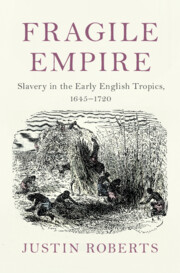Book contents
4 - Fevers
Disease, Race, and Slavery
Published online by Cambridge University Press: 19 December 2024
Summary
This chapter explores how the evolving disease environments of the tropics shaped free and forced migration patterns at English sites. The globalization of forced labor markets and trade were catalysts in the spread of yellow fever and falciparum malaria, diseases that originated in Africa and that disproportionately weakened or killed English migrants to the tropics. These were the two deadliest mosquito-borne fevers that the English encountered in the tropics. The ways in which the English understood and responded to evolving tropical disease environments and their differential effects on European and non-European populations contributed to the rise of enslaved majorities in the tropics and informed ideas about human difference that would coalesce into nineteenth-century racism. The chapter will also show how epidemiology made English footholds in the tropics much more precarious and dependent on non-Europeans than the English footholds in other more temperate zones of the empire. The chapter relies on case studies of disease outbreaks in the Caribbean, on the West African Gold Coast, and in Sumatra at key points in the seventeenth century.
- Type
- Chapter
- Information
- Fragile EmpireSlavery in the Early English Tropics, 1645–1720, pp. 166 - 203Publisher: Cambridge University PressPrint publication year: 2025

